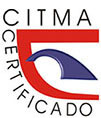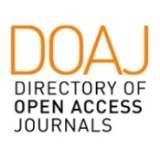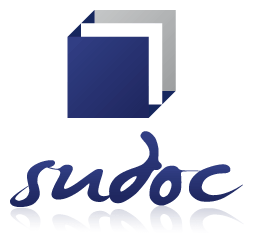Creole language spoken in St. Lucia: sociolinguistics, phonology and grammar
Keywords:
santalucense creole language, phonic patterns, grammatical patterns, sociolinguistic contextAbstract
Introduction: This article has two objectives. The first is to present the sociolinguistic factors that have conditioned the conformation and use of the Creole language spoken in the Caribbean Island of St. Lucia (LCSL), and the second is to examine the structural aspects: phonic and grammatical aspects that constitute descriptive gaps in the linguistic studies of this Creole.
Methods: In the description and explanation of linguistic forms and categories, methods of structural analysis by levels have been taken into account, particularly those related to phonological and morphosyntactic analysis. This study also shows a comparison between phonic and grammatical structures of English, French and St. Lucia Kwéyòl.
Results: Kwéyòl is the language spoken by a large majority of the population and the language used for everyday communication in the Saint Lucian community. The proposed analysis identifies phonological and morphosyntactic patterns evidenced by examples obtained from native speakers of the language.
Conclusions: The minimal phonology and grammatical aspects we have presented here point out that LCSL has a structure of its own and constitutes a system independent of French.
Downloads
References
ARENDS, J.; PIETER, M.; NORVAL, S. (EDS.) (1995). Pidgins and Creoles. An introduction. Amsterdam, Philadelphia: John Benjamins.
BICKERTON, D. (1975). Dynamics of a Creole System, Cambridge University Press.
BREEN, H. (1844). St. Lucia: Historical, Statistical and Descriptive. London: Longman, Brown, Green and Longmans.
CADETTE-BLASSE, A. (2008). Vers une didactique du francais adaptée au contexte de Sainte–Lucie. En CHAUDENSON, ROBERT, Didactique du francais en milieux créolophones. Outils pédagogiques et formation des maîtres. Organisation internationale de la Francophonie, L’Harmattan. París: 203 -215.
CARRINGTON, L. (1984). St. Lucia Creole. A descriptive Analysis of its Phonology and Morphosyntax, Kreolische Bibliothek, Vol.6, Hambourg, Helmut Buske.
CHAUDENSON, R. (2008). Didactique du francais en milieux créolophones. Outils pédagogiques et formation des maîtres. Organisation internationale de la Francophonie, L’Harmattan. París.
CHING PANG (1981). Tesis de Maestría en Lingüística. E.U.
DALPHINIS, M. (1985). Caribbean and African Languages: Social History, Language, Literature and Education. London: Karia Press.
Datos de población de Santa Lucía en: https://web.archive.org/web/20131006192056/ http://204.188.173.139:9090/stats/images/publications/Statistical_Digest_2011.pdf
Datos de Santa Lucía en: https://www.worldstatesmen.org/Saint_Lucia.html
Tratado de París recuperado en: http://www.law.ou.edu/hist/paris.html
DE CAMP, D. (1971a). Introduction: The Study of Pidgins and Creole Languages. En HYMES (ED), Pidginization and Creolization of Languages. Cambridge, Cambridge University Press: 13-39.
DE CAMP, D. (1971b). Towards a generative analysis of a post-creole speech continuum. En: HYMES, DELL (ED.) Pidginization and Creolization of Languages. Cambridge: Cambridge University Press.
FRANK, D. B. (jun. 17, 2007a). Sources of St Lucia Creole Vocal. Conferencia de The Society for Pidgin and Creole Linguistics. University of Amsterdam.
FRANK, D. B. (2007b). We Don’t Speak a Real Language: Creoles as Misunderstood and Endangered Languages. Paper presented at a Symposium on Endangered Languages at the National Museum of Language in College Park, MD. Disponible en línea www.saintluciancreole.org/workpapers/creoles_as_misunderstood.pdf.
FRANK, D., CROSBIE, C. (1999) (COMP.) Mannyè ou sa li èk ékwi Kwéyòl. SIL.
GARCÍA LEÓN, E. J. (2014). Una visión global de las lenguas criollas: perspectivas y retos de la criollística. Folios, No. 39, Primer semestre de 2014: 51-14
JOHN, Z. (2015). El sistema vocálico de la lengua criolla hablada en Santa Lucía. Tesis de maestría (ICR inédita). Universidad Autónoma Metropolitana-Iztapalapa (México). http://tesiuami.izt.uam.mx/uam/aspuam/presentatesis.php?recno=16926&docs=UAMI16926.pdf
LASTRA, Y. (1997). Sociolingüística para hispanoamericanos. Una introduducción. El Colegio de México.
LOUISY, P. (2009). Interfacing with Kwéyòl Speakers: The case for Standisation. Feature Address delivered at the Folk Research Centre’s. Symposium Creole Heritage Month.
MARTÍNEZ GORDO, I. (2002). Rebeldía lingüística ante la marginalidad. El créole haitiano en Cuba. En: Romanische Sprachen in America. Frankfurt am Main: Peter Lang, Alemania: 333-338.
MARTÍNEZ, L., GERMAN, C. Y ÁLVAREZ MALDONADO, C.A. (2016). Deapenca: publicación sobre la historia y la cultura de Santa Lucía, Boaco. Tesis de licenciatura, Universidad Centroamericana. Consultado en http://repositorio.uca.edu.ni/id/eprint/4353
MONTES DE OCA, M. (29 de enero de 2021). ¿Qué son las lenguas pidgins y criollas? En: Algarabía, El Finaciero. México.
NARANJO OROVIO, C. (2014). Las Antillas hispánicas y británicas. El Colegio de México.
NIKIEMA Y BHATT (2005). R dipthongs in French lexifier creoles: Evidence from Hatian, Toronto Working Papers in Linguistics, 24: 49-52.
SANTANA CEPERO, E. (2009). Caracterización sociolingüística de una lengua criolla: el kwéyòl de la isla caribeña de Santa Lucía. Ponencia presentada en X Seminario Internacional de Verano Caribe: Economía, Política y Sociedad. Chetumal, UQROO. México.
SANTANA CEPERO, E., MARTÍNEZ GORDO, I. (2013). Contexto sociolingüístico del kweyól hablado en Santa Lucía. Preliminares. Anuario L/L (Serie de Lingüística), No. 40-44. Instituto de Literatura y Lingüística «J. Antonio Portuondo Valdor», La Habana: 10- 27.
TOYNBEE, M. W. (1969). A visitor’s guide to St. Lucia Patois, including quick phrases, basic gramar, 400-word vocabulary, 28 old-time prover. Consultar en: https://es.scribd.com/document/104108863/Toynbee-MW-Visitor-s-Guide-St-Lucian
Downloads
Published
How to Cite
Issue
Section
License
Copyright (c) 2023 Elizabeth Santana Cepero

This work is licensed under a Creative Commons Attribution-NonCommercial 4.0 International License.
Usted es libre de:
Compartir — copiar y redistribuir el material en cualquier medio o formato
Adaptar — remezclar, transformar y construir a partir del material
La licenciante no puede revocar estas libertades en tanto usted siga los términos de la licencia
Bajo los siguientes términos:
Usted es libre de:
Atribución — Usted debe dar crédito de manera adecuada, brindar un enlace a la licencia, e indicar si se han realizado cambios. Puede hacerlo en cualquier forma razonable, pero no de forma tal que sugiera que usted o su uso tienen el apoyo de la licenciante.
NoComercial — Usted no puede hacer uso del material con propósitos comerciales.
No hay restricciones adicionales — No puede aplicar términos legales ni medidas tecnológicas que restrinjan legalmente a otras a hacer cualquier uso permitido por la licencia.


















